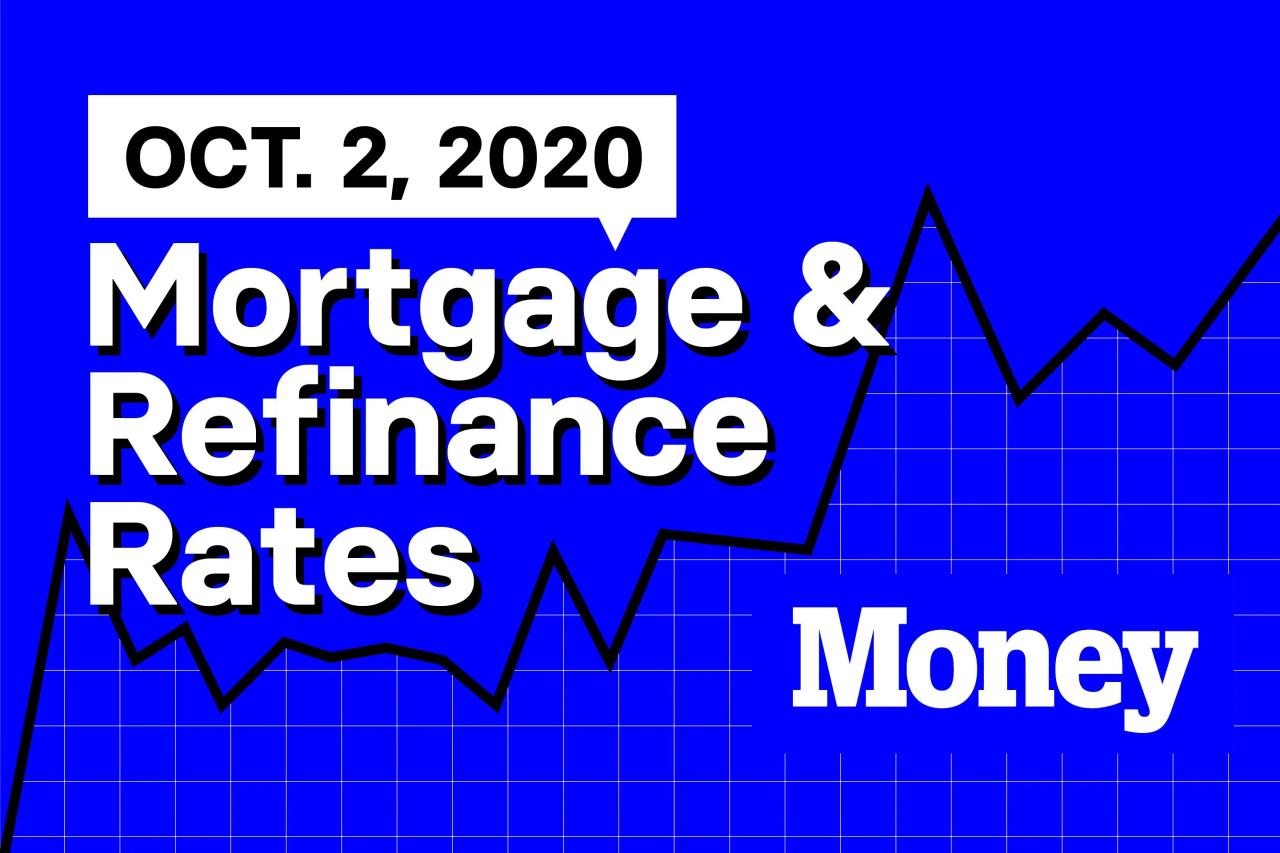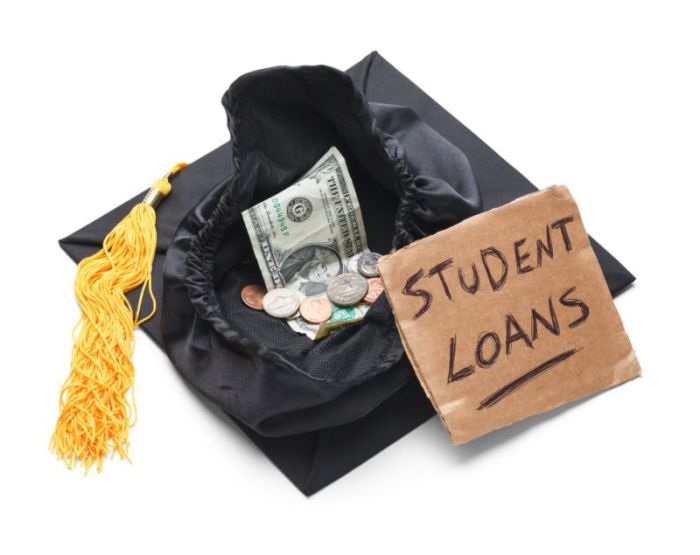
Navigating the complex world of student loan refinancing can feel overwhelming, but securing the lowest rates is achievable with careful planning and research. This guide delves into the key factors influencing refinance rates, providing actionable strategies to help you find the best options and ultimately save money on your student loan debt. We’ll explore the process, benefits, risks, and everything in between to empower you to make informed decisions.
Understanding your credit score, loan amount, and income level is crucial. We’ll examine how these factors interact with lender offerings, highlighting the importance of comparing multiple lenders and utilizing online tools to maximize your chances of securing a favorable rate. This guide also addresses common pitfalls and provides a roadmap for a smooth and successful refinancing experience.
Factors Affecting Refinance Rates

Securing the lowest student loan refinance rate involves understanding the key factors lenders consider. These factors interact in complex ways, and a strong performance in one area might compensate for a weakness in another, but generally, a higher overall score across these factors will lead to better rates.
Credit Score’s Impact on Interest Rates
Your credit score is arguably the most significant factor influencing your refinance rate. Lenders use your credit score to assess your creditworthiness – the likelihood you’ll repay the loan. A higher credit score (generally above 700) indicates lower risk to the lender, resulting in lower interest rates. Conversely, a lower credit score (below 670) signifies higher risk, leading to higher interest rates or even loan rejection. For example, a borrower with a 750 credit score might qualify for a rate 1-2 percentage points lower than a borrower with a 680 score, representing substantial savings over the life of the loan. The specific impact will vary between lenders, but the trend is consistent across the industry.
Loan Amount and Loan Term’s Influence on Rates
The amount you’re refinancing and the length of your new loan term also play a significant role. Larger loan amounts often come with slightly higher rates due to the increased risk for the lender. Similarly, longer loan terms (e.g., 20 years versus 10 years) can result in higher rates because the lender faces a longer period of exposure to potential default. A shorter loan term, while requiring larger monthly payments, typically results in lower overall interest paid and, in some cases, a slightly lower interest rate.
Income Level’s Effect on Approval and Rates
Your income level is another critical factor. Lenders assess your debt-to-income ratio (DTI) – the percentage of your gross monthly income dedicated to debt payments. A lower DTI demonstrates your ability to manage your finances effectively and repay the loan, leading to potentially better rates. Conversely, a high DTI may signal higher risk, resulting in higher interest rates or even loan denial. For instance, an applicant with a stable, high income and low DTI is more likely to secure a favorable rate compared to someone with a low income and high DTI, even if their credit scores are similar. Lenders often prefer to see consistent income history over a period of time.
Finding the Lowest Rates

Securing the lowest student loan refinance rate requires a proactive and strategic approach. This involves understanding the factors influencing rates, comparing offers from multiple lenders, and employing effective negotiation techniques. By following a systematic process, borrowers can significantly reduce their overall borrowing costs.
Finding the best refinance rate isn’t a matter of luck; it’s about diligent research and smart comparison shopping. The strategies Artikeld below will help you navigate the process and achieve substantial savings.
Strategies for Finding the Lowest Refinance Rates
Several key strategies can significantly improve your chances of securing the lowest refinance rate. These include checking your credit score, pre-qualifying with multiple lenders, and timing your application strategically. A well-planned approach is crucial for maximizing your chances of success.
- Improve your credit score: A higher credit score is directly correlated with lower interest rates. Focus on paying down debt, maintaining a consistent payment history, and limiting new credit applications before applying for refinancing.
- Shop around and compare offers: Don’t settle for the first offer you receive. Compare rates from several lenders to find the most competitive option. This includes both large national lenders and smaller, regional institutions.
- Pre-qualify with multiple lenders: Pre-qualification allows you to check your eligibility and obtain rate estimates without impacting your credit score. This lets you compare rates before formally applying.
- Time your application strategically: Interest rates fluctuate, so consider applying when rates are generally low. Researching current market trends can be beneficial.
Comparing Offers from Different Lenders
A systematic approach to comparing refinance offers is essential to avoid overlooking crucial details. This involves meticulously examining interest rates, fees, repayment terms, and lender reputation.
- Gather multiple offers: Obtain pre-qualification or formal quotes from at least three to five different lenders. Ensure you provide consistent information to each lender for fair comparison.
- Compare Annual Percentage Rates (APRs): The APR reflects the total cost of the loan, including interest and fees. Focus on comparing APRs rather than just interest rates to get a complete picture.
- Analyze repayment terms: Consider loan terms, such as the length of the repayment period, which will affect your monthly payment and total interest paid. Shorter terms mean higher monthly payments but less total interest.
- Review fees: Pay close attention to origination fees, prepayment penalties, and other associated charges. These can significantly impact the overall cost of the loan.
- Research lender reputation: Check online reviews and ratings to assess the lender’s reputation for customer service and loan processing efficiency.
Checklist for Evaluating Refinance Offers
A comprehensive checklist ensures you don’t miss any critical aspects when evaluating refinance offers. This structured approach helps you make an informed decision.
| Factor | Description | Evaluation |
|---|---|---|
| APR | Annual Percentage Rate, including interest and fees | Compare APRs across all offers |
| Interest Rate | The interest rate charged on the loan | Note the difference between APR and interest rate |
| Loan Term | Length of the repayment period | Consider the impact on monthly payments and total interest |
| Fees | Origination fees, prepayment penalties, etc. | Calculate the total cost including fees |
| Repayment Schedule | Fixed or variable rate; monthly payment amount | Choose a schedule that fits your budget |
| Lender Reputation | Customer reviews and ratings | Choose a reputable and reliable lender |
Using Online Comparison Tools Effectively
Online comparison tools can streamline the process of finding the best refinance rates. However, it’s important to use them strategically to maximize their effectiveness.
Many websites allow you to input your financial information and receive multiple refinance offers from different lenders. Remember to carefully review the terms and conditions of each offer before making a decision. Don’t rely solely on the comparison tool; conduct your own independent research to verify the information provided.
Negotiating Lower Interest Rates
While comparison shopping is crucial, there’s often room for negotiation. A well-prepared borrower can sometimes secure a lower interest rate than initially offered.
“Prepare a strong case highlighting your creditworthiness and financial stability. Be prepared to compare offers from other lenders.”
This demonstrates your commitment and may encourage the lender to offer a more competitive rate. Maintain a polite and professional demeanor throughout the negotiation process.
Eligibility Requirements

Securing a student loan refinance requires meeting specific criteria set by lenders. These requirements aim to assess your creditworthiness and ability to repay the loan, ultimately protecting both you and the lender. Understanding these requirements is crucial for a successful application.
Lenders use a variety of factors to determine your eligibility. A comprehensive understanding of these factors empowers you to improve your chances of approval and secure the best possible terms.
Credit History
A strong credit history is paramount in the student loan refinance process. Lenders meticulously review your credit report, looking for indicators of responsible financial behavior. A high credit score demonstrates your ability to manage debt effectively, making you a lower-risk borrower. Factors considered include your payment history (on-time payments are crucial), credit utilization (keeping your credit card balances low), length of credit history (a longer history generally signifies greater financial stability), and the types of credit you have (a mix of credit types is often viewed favorably). A low credit score can significantly impact your approval chances, potentially leading to higher interest rates or rejection. Aim for a credit score above 700 for the most favorable terms.
Debt-to-Income Ratio
Your debt-to-income ratio (DTI) is another key factor. This ratio compares your total monthly debt payments (including student loans, credit cards, mortgages, etc.) to your gross monthly income. A lower DTI indicates that you have more disposable income relative to your debt, suggesting a greater capacity to manage additional debt. Lenders generally prefer borrowers with a lower DTI, typically below 43%, although this can vary depending on the lender and the specifics of your application. Strategies to improve your DTI include paying down existing debts, increasing your income, or applying for a smaller loan amount.
Potential Barriers to Refinancing and Solutions
Several factors can hinder your ability to refinance student loans. These include a low credit score, a high debt-to-income ratio, a lack of consistent income, or the type of student loans you possess (some lenders may not refinance certain loan types like Parent PLUS loans). To overcome these barriers, focus on improving your credit score through responsible financial habits, paying down existing debt to lower your DTI, and ensuring a stable income stream. If you have a low credit score, consider working with a credit counselor to improve your creditworthiness over time. If you have inconsistent income, consider securing a co-signer with a strong credit history to strengthen your application.
Common Reasons for Loan Refinance Rejection
Understanding the common reasons for loan refinance rejection can help you proactively address potential issues and improve your chances of approval.
It’s important to carefully review your financial situation and address any potential weaknesses before applying.
- Low credit score
- High debt-to-income ratio
- Insufficient income
- Inconsistent income history
- Negative marks on credit report (e.g., late payments, collections)
- Insufficient loan amount to refinance
- Unsupported loan type (e.g., Parent PLUS loans)
- Incomplete or inaccurate application information
Wrap-Up
Securing the lowest refinance rates for your student loans requires diligence and a strategic approach. By understanding the factors influencing rates, carefully comparing lender offers, and navigating the application process effectively, you can significantly reduce your overall loan costs. Remember to weigh the long-term implications, consider potential risks, and prioritize finding a lender that aligns with your financial goals. Taking the time to do your research and plan accordingly will ultimately lead to a more manageable and affordable repayment journey.
Essential Questionnaire
What is the difference between federal and private student loan refinancing?
Federal student loans offer government-backed protections, such as income-driven repayment plans. Private loans, once refinanced, lose these protections but may offer lower interest rates depending on your creditworthiness.
How often should I check for better refinance rates?
It’s advisable to check rates periodically, especially if your credit score improves significantly or interest rates fall in the market. However, avoid applying too frequently, as multiple hard inquiries can negatively impact your credit score.
Can I refinance student loans with co-signer?
Yes, adding a co-signer with good credit can significantly improve your chances of approval and potentially secure a lower interest rate, particularly if your credit history is limited or imperfect.
What happens if I default on a refinanced student loan?
Defaulting on a refinanced private student loan can severely damage your credit score, potentially leading to wage garnishment, lawsuits, and difficulty obtaining future credit. The consequences are generally more severe than with federal loans.
